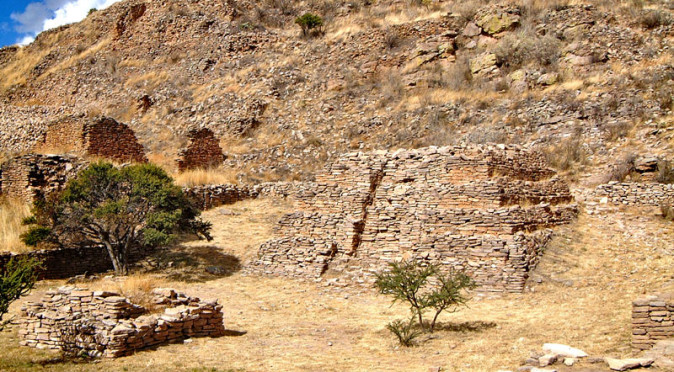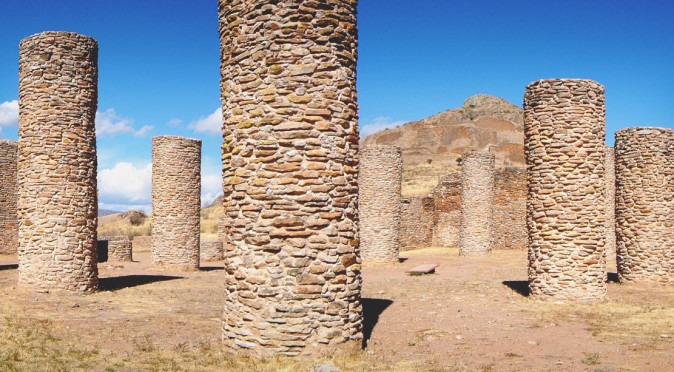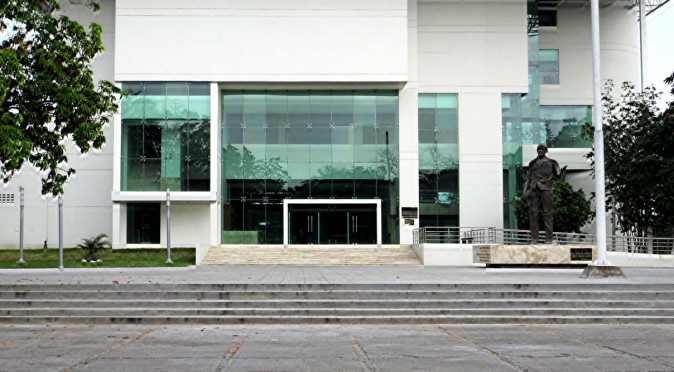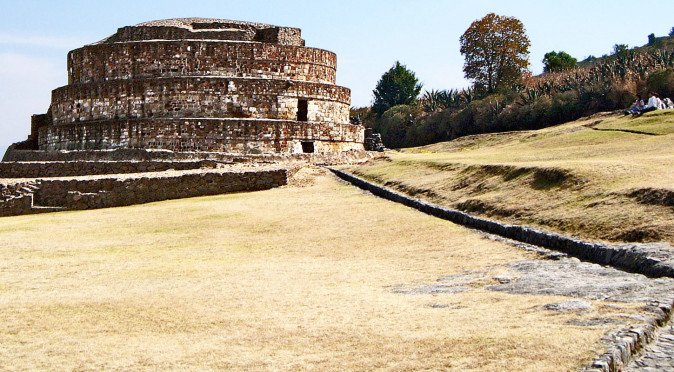
La Quemada: The Ball Court
The Ball Court at La Quemada is one of the few typically Mesoamerican features that is found at the site, although there are still some anomalies which raise questions.

The Ball Court at La Quemada is one of the few typically Mesoamerican features that is found at the site, although there are still some anomalies which raise questions.

The Votive Pyramid dominates La Quemada’s ceremonial centre. It’s unusual design raised serious questions about how and why it was built.

La Quemada’s third level features an enormous terrace on which they built a large ceremonial complex that appears to have been dedicated to human sacrifice.

Set in the dramatic extremes of Mesoamerica’s northern frontier, the 500yr old mystery of who built La Quemada, and why, has only deepened with modern research.

Malinalco history is largely entwined in myth and folklore and yet a few historical accounts and a small archaeological site do seem to support its legendary past.

Structure III is similar to Structure I in its floor-plan, but was ritually built on top of an older structure rather than carved out of the rock face.

Structure II is an archetypal Mesoamerican pyramidal platform, which creates an unusually small plaza on the side of the Cerros de los Idolos.

The stunning Cuauhcalli is the only known monolithic temple built by the Aztec and was carved into the hillside 125m above the town of Malinalco entirely in one piece.

Malinalco is home to one of the wonders of the Aztec world, the site of Cuauhtinchan, which is propped precariously on a steep hillside, 125m above the town.

The “Caritas Sonrientes”, or “Smiley Faces”, stand out on account of their smiling faces, an emotion seldom seen in the artwork of Mesoamerica.

The Museo Regional de Antropología Carlos Pellicer Cámara is home to 770 pieces of ancient artwork, some of which were defining moments in Mesoamerican art history.

Many discussions on the enigmatic Olmec revolve around the huge African-looking heads, but could it be the mysterious “were-jaguar” that holds the key to who they were?

Mitla is believed to be the legendary “Abode of the Dead” and home to the “Temple of the Underworld”, but is it genuinely this hellish town?

Almost every doorway, room and tomb at Mitla is decorated with step-fret mosaics, which were intricately carved and slotted together. Are they simply lavish decoration?

Monte Alban was one of the most sophisticated cities of ancient Mesoamerica, but encryptions built into the fabric of the city that suggest it may have served a higher purpose…

The city of Calixtlahuaca features a number of interesting references to the Serpent and the creator Gods – and it all starts with the serpentine shape of Building 3.

The discovery of a Roman figurine at Calixtlahuaca has obviously attracted interest from pseudo-historians and ancient transoceanic contact theorists, but is it really Roman?

Although it features one of the most striking temples in Mesoamerica, the circular Temple of Quetzalcoatl-Ehecatl, Calixtlahuaca is probably most famous for its Roman connection…